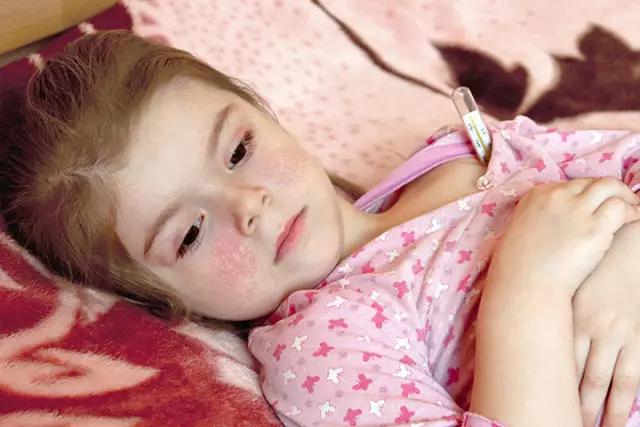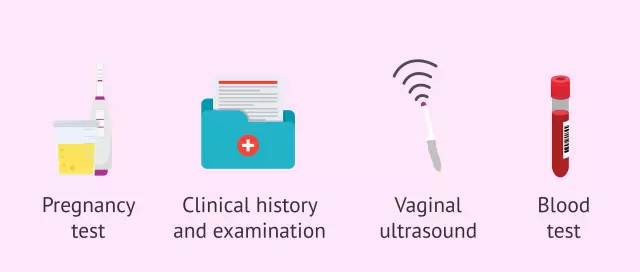- Author Rachel Wainwright [email protected].
- Public 2023-12-15 07:39.
- Last modified 2025-11-02 20:14.
Infectious erythema

Infectious erythema is a disease caused by the human virus type B19. To date, the disease has not yet been sufficiently studied, although the main causes and methods of infection have already been identified.
Infectious erythema is especially common in children, although adults can also get sick. The disease belongs to respiratory infections, as it is transmitted by airborne droplets.
Infectious erythema in children with weakened immunity may indicate blood diseases or the presence of any chronic diseases.
Symptoms of infectious erythema
Symptoms of the disease may differ depending on various factors: age, problems with the blood system, concomitant pathologies, etc. The very first symptoms of infection are respiratory signs that resemble the early period of a cold or flu. The body temperature rises, there is a runny nose, itching in the nose, sneezing, tickling and sore throat, headache, chills, loss of appetite, general weakness of the body.
After a few days, a rash appears on the body. In some patients, the rash is accompanied by severe muscle and joint weakness. According to clinical signs, infectious erythema is similar to various diseases, so doctors often find it difficult to make a correct diagnosis.
Often the disease is confused with other viral and microbial infections: roseola, rubella, scarlet fever, measles. Sometimes infectious erythema can be confused with various allergic reactions to certain medications or contact dermatitis. Some connective tissue diseases occur with similar symptoms: systemic lupus erythematosus, rheumatoid arthritis, scleroderma.
The main manifestations of infectious erythema are symptoms similar to those of colds. They appear a couple of days after the virus affects the body. They often go almost unnoticed for the patient. In the subclinical course of the disease, the rash may be short-lived and then the patient does not realize at all that he was sick. A typical course is accompanied by pain in the abdomen and head, joint pain, fever up to 38 degrees, and general malaise.
The rash, as a rule, appears on the body on the fifth day from the moment of infection, an atypical course may be infectious erythema without a rash.
The manifestation of the rash is of a specific nature and occurs in several stages. Initially, bright red rashes appear on the cheeks. At the same time, the face looks as if the child was whipped on the cheeks. Sometimes the rash spreads to the forehead and chin. A similar rash lasts for several days, after which it disappears without a trace.
In the second stage, the rash occurs in the trunk, neck, shoulders and forearms, buttocks, knees and upper legs. Externally, the rash looks like red round spots, which subsequently grow in the form of "lace". The rashes are accompanied by itching and stay on the body for about a week, after which they completely disappear. However, under the influence of the sun or stress, it may reappear in the same places, and not go away until three weeks. The occurrence of a second rash does not necessarily indicate a worsening of the condition.
Complications of infectious erythema
Infectious erythema in children can cause various complications, but not always. First of all, the synthesis of red blood cells (red blood cells) may stop during the period of the disease. As a rule, this complication in healthy people goes unnoticed and does not cause significant problems with hematopoiesis.
If the patient already has problems with the blood system and erythrocytes in particular (sickle cell anemia, thalassemia), then this can provoke serious complications in the blood system. A temporary cessation of the production of red blood cells can manifest itself in an aplastic crisis lasting up to 7-10 days.

Even more dangerous is infectious erythema for people with aplastic anemia. In these patients, the illness is accompanied by lethargy, fever attacks, palpitations, and other unpleasant symptoms.
Infectious erythema in children with immunodeficiency can develop into a chronic form, which ultimately will lead to the development of serious damage to hematopoiesis and bone marrow with the formation of persistent anemia.
Diagnosis of infectious erythema
As mentioned earlier, laboratory and clinical diagnosis of this disease presents certain difficulties. As a rule, infectious erythema can be suspected by the presence of laces typical of the rash.
To diagnose infectious erythema, it is necessary to conduct a number of laboratory tests: serological examinations to detect a number of antibodies to the virus, general blood tests to determine the level of erythrocytes in the blood. The number of platelets and leukocytes is also important, since they also participate in the process of hematopoiesis and are reduced along with red blood cells.
A complete blood count also makes it possible to assess the effectiveness of therapy and the beginning of the recovery period.
Erythema Infectious Disease Treatment
When infectious erythema occurs in children and adults, home treatment is indicated. The principle of treatment is the same as for all viral infections. During the fever, it is necessary to stay in bed and take plenty of fluids, as well as symptomatic and antiviral drugs.
It is important to note that the presence of the second and third waves of the rash does not indicate the severity of the course of the disease, but is its characteristic feature. At the time of illness, it is worth limiting the intake of hot baths, as well as exposure to the sun and in a solarium, as this provokes repeated rashes.
When treating infectious erythema, antibiotics are not prescribed, since this disease is viral. However, it is possible to prescribe antibiotics if angina, otitis media, pneumonia, or microbial complications join the disease.
A certain danger is posed by a disease during pregnancy, as well as for people with blood diseases or weakened immunity. In this case, the treatment of infectious erythema can be carried out in a hospital under constant monitoring of laboratory parameters and hematopoiesis. Pregnant women are additionally prescribed an ultrasound of the state of the fetus, as well as detailed tests for blood and clotting.
No quarantine measures are taken in the treatment of infectious erythema, since the patient, from the moment the rash appears, becomes completely non-infectious, therefore, with good health, he may well lead a usual lifestyle.
At this time, scientists are actively developing a vaccine against the B19 virus, so it is possible that vaccination against this disease will be carried out in the near future.
YouTube video related to the article:
The information is generalized and provided for informational purposes only. At the first sign of illness, see your doctor. Self-medication is hazardous to health!






